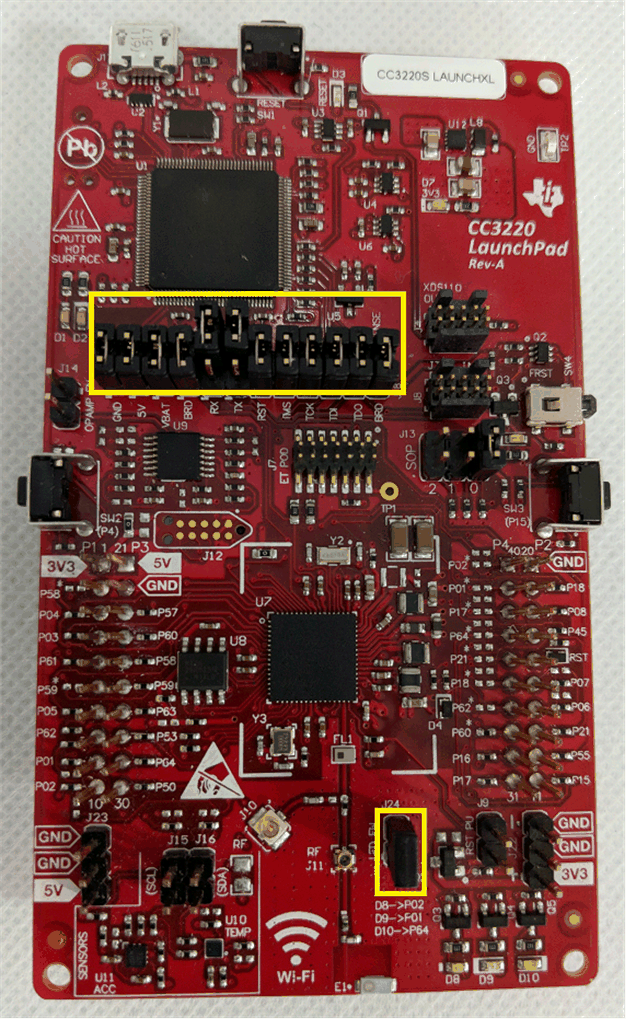TIDUE59A May 2018 – September 2020
- Description
- Resources
- Features
- Applications
- 1System Description
-
2System Overview
- 2.1 Block Diagram
- 2.2 Design Considerations
- 2.3 Highlighted Products
- 2.4 System Design Theory
- 3Hardware, Software, Testing Requirements, and Test Results
- 4Design Files
- 5Software Files
- 6Related Documentation
- 7Terminology
- 8About the Author
- 9Revision History
3.1.1.1 CC3220S LaunchPad™ Development Kit
To run the demo, the CC3220S LaunchPad kit must be configured with the jumpers highlighted in Figure 3-1 placed. The placement of jumpers on the SOP header depends on whether the software is being debugged or run standalone from the external serial flash.
 Figure 3-1 CC3220S-LAUNCHXL Jumper Configuration
Figure 3-1 CC3220S-LAUNCHXL Jumper ConfigurationThe CC3220S-LAUNCHXL must be modified when measuring the power consumption of the system. Section 3.2 describes the modification, because the modification is not necessary to run the software application and demonstrate the system.